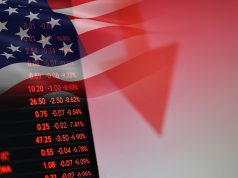On the foreign exchange market, the dollar retreated on Friday after the release of disappointing U.S. employment figures in November. The dollar index, which tracks the buck against a basket of 6 currencies (euro, yen, pound sterling, Swiss franc, Canadian dollar and Swedish krona) fell 0.2% to 96.64 points. Over the week, the greenback has fallen by about one-half percent, and it has dropped 0.86% from its highest level of the year recorded in November, to 97.54 points. However, the US currency has maintained a 4.7% gain since the beginning of the year against major world currencies, a step underpinned by three Fed rate hikes since the beginning of the year.
Bond markets continued to serve as a haven for investors fleeing risk-taking, which added to lower interest rates, already weakened by last week’s more “dove” shift by Fed Chairman Jerome Powell, judging the key rates “just below” a “neutral” level and suggesting a future pause in the hikes. Friday evening, the yield of the 10-year US government bond (T-Bond) finished at 2.85% (-4 basis points) while a month earlier, it had peaked at 3.25%.
Markets did not appreciate employment figures, which showed some signs of weakness, despite a jobless rate of 3.7%. The job creations were well below the forecasts of economists, to 150,000 instead of nearly 200,000 expected. Investors fear for growth, especially as trade negotiations between the United States and China may fail due to the arrest of Huawei’s CFO.
While economic growth remains generally solid in the United States, cracks have emerged in recent months. Economic growth, which had reached 4.2% in the 2nd quarter on an annual basis, slowed in the 3rd quarter to 3.5%. As for the profits of US companies, they jumped nearly 25% in the 3rd quarter compared to 2017, but the analysts expect a sharp slowdown in 2019. Next year, the positive effect of tax cuts Donald Trump will fade, and the rise of trade barriers may have a negative effect (still difficult to measure) on many US companies.
On Wednesday, in its latest Beige Book, the Fed also noted a slowdown in recent weeks in the construction market, while portraying a US economy still growing modestly to moderately across regions. Fed officials are now more cautious in their speeches, whereas until very recently, they hinted that the central bank may raise its rates at the end of its meeting this month.










